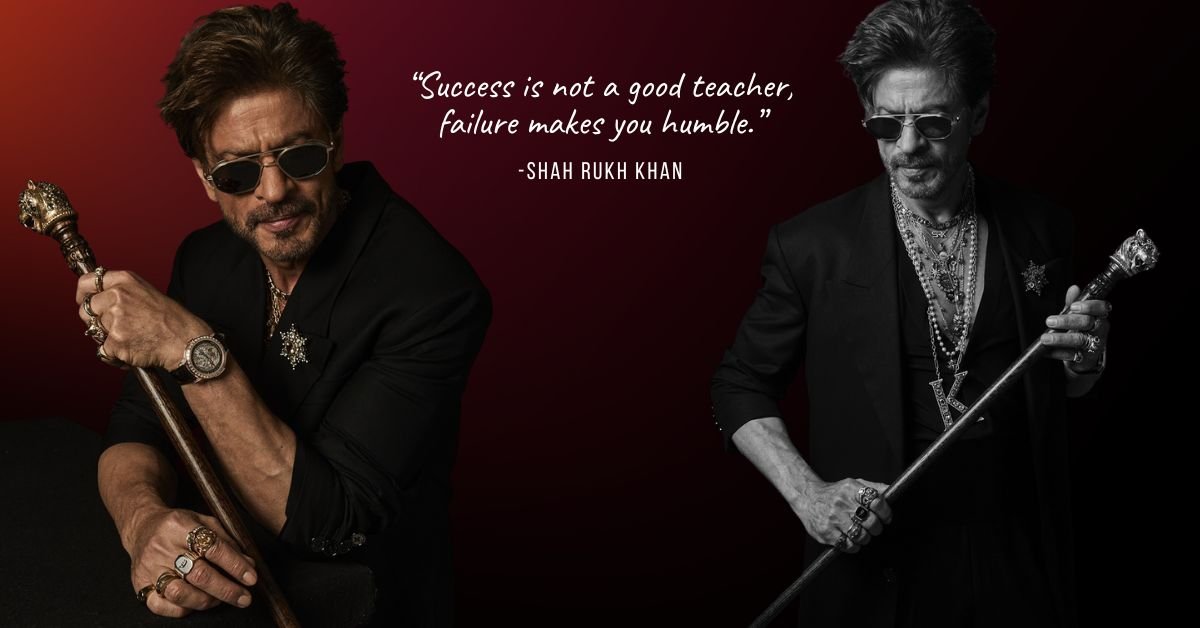India banned 25 OTT platforms, including Ullu and ALTT, for obscene content. Explore the reasons, impacts, global comparisons, and future of digital streaming.
Table Of Contents
Hey there, folks!
If you are like me, you have probably spent countless evenings binge-watching your favorite shows on OTT platforms.
However, today, things have gotten more serious in digital entertainment.
On July 25, 2025, the Indian government dropped a bombshell by banning 25 OTT platforms accused of peddling obscene, vulgar, and downright pornographic content.
It is a move that’s got everyone talking, from industry insiders to everyday viewers.
Is this a necessary step to protect society, or is it overreach?
Let us dive deep into what happened, why it matters, and what could come next.
As someone who has followed the OTT scene closely, we believe this could reshape how we consume content in India.
The Rise Of OTT In India: A Quick Backstory
Let us start from the beginning because understanding the history helps make sense of today’s drama.
OTT, or Over-The-Top platforms, means services that deliver video content directly over the internet, bypassing traditional cable or satellite TV.
Think Netflix, but homegrown versions like Hotstar or Zee5.
In India, the OTT boom kicked off around 2008 with BigFlix, launched by Reliance Entertainment.
It was the first independent Indian OTT service, setting the stage for a massive industry.
Fast-forward to the 2010s, when smartphones became affordable and data plans got cheaper (thanks to Jio’s disruption in 2016), and suddenly, everyone was streaming.
By 2020, revenue from OTT in India hit over $2 billion; today, there are about 57 active providers serving millions.
However, with great growth came great scrutiny.
OTT was like the Wild West early on: no licenses were needed, and minimal oversight existed.
Content creators loved the freedom, but critics worried about unregulated material slipping through, especially stuff that could harm kids or offend cultural sensibilities.
The turning point?
The 2021 IT (Intermediary Guidelines and Digital Media Ethics Code) Rules.
These mandated self-regulation, age ratings, and grievance redressal mechanisms.
Platforms had to classify content and avoid anything obscene.
Before this latest ban, there was a precursor in March 2024, when 18 platforms like Dreams Films, Voovi, and Prime Play were shut down for similar reasons.
That action blocked apps and hundreds of associated websites and social media handles.
It was a wake-up call, but apparently, not everyone listened.
Some banned platforms even resurfaced with new domains, prompting this bigger crackdown.
To give you a clearer picture, here is a timeline of key events in India’s OTT regulation:
| Year | Event |
|---|---|
| 2008 | Launch of BigFlix, India’s first OTT platform. |
| 2016 | Jio’s affordable data sparks OTT explosion. |
| 2020 | OTT revenue crosses $2 billion; COVID-19 lockdowns boost viewership. |
| 2021 | IT Rules introduce self-regulation and an ethics code. |
| 2024 | March ban on 18 platforms for obscene content. |
| 2025 | July 25 ban on 25 platforms, the largest yet. |
This evolution shows how OTT went from niche to mainstream, forcing the government to step in.
We remember when shows like Sacred Games pushed boundaries in 2018.
It was exciting but also sparked debates about what is too far.
Why the Ban? Breaking Down The Reasons
So, what exactly triggered this?
The Ministry of Information and Broadcasting (MIB) did not pull this out of thin air.
They consulted with heavyweights like the Ministry of Home Affairs, Women and Child Development, the Ministry of Electronics and IT, legal experts, and industry bodies such as FICCI and CII.
The consensus?
These platforms were crossing lines that violated multiple laws.
The content in question often featured nudity, explicit sexual acts in taboo contexts (like teacher-student or family relationships), and prolonged scenes with no real story value, just shock for clicks.
This was not about artistic expression; it was seen as straight-up exploitation, especially of women, and a risk to minors who could access it easily.
Key violations included:
- Sections 67 and 67A of the IT Act, 2000: These prohibit transmitting obscene or sexually explicit material electronically.
- Section 294 of the Bharatiya Nyaya Sanhita, 2023, Deals with obscene acts in public spaces, now extended to digital realms.
- Section 4 of the Indecent Representation of Women (Prohibition) Act, 1986: Bans indecent portrayals of women.
Internet Service Providers (ISPs) were ordered to block these platforms nationwide without apps, websites, or sneaky workarounds.
This is not censorship for censorship’s sake; it is framed as protecting societal morals and vulnerable groups.
As parents, we are concerned that kids today have smartphones, and harmful stuff is just a tap away without checks.
For a structured look at the laws involved:
| Law/Act | Key | Relevance |
|---|---|---|
| IT Act, 2000 (Sections 67, 67A) | Bans obscene/sexually explicit electronic content | Directly targets pornographic streaming |
| Bharatiya Nyaya Sanhita, 2023 | Penalizes obscene acts | Applies to vulgar depictions in media |
| Indecent Representation Act, 1986 | Prohibits indecent portrayal of women | Addresses exploitative content |
| IT Rules, 2021 | Mandates self-classification and ethics code | Platforms failed to comply |
These are not new laws; they have been around, but enforcement is ramping up as OTT grows.
The Full List: Which Platforms Got Hit?
Here is the heart of the story: the 25 platforms now off-limits.
Many were niche players known for “bold” adult-themed series, but they had veered into explicit territory.
Ullu and ALTT (formerly ALTBalaji) were big names, often criticized for pushing envelopes too far.
| No. | Platform |
|---|---|
| 1 | ALTT (ALTBalaji) |
| 2 | Ullu |
| 3 | Big Shots App |
| 4 | Desiflix |
| 5 | Boomex |
| 6 | NeonX VIP |
| 7 | Navarasa Lite |
| 8 | Gulab App |
| 9 | Kangan App |
| 10 | Bull App |
| 11 | ShowHit |
| 12 | Jalva App |
| 13 | Wow Entertainment |
| 14 | Look Entertainment |
| 15 | Hitprime |
| 16 | Fugi |
| 17 | Feneo |
| 18 | ShowX |
| 19 | Sol Talkies |
| 20 | Adda TV |
| 21 | HotX VIP |
| 22 | Hulchul App |
| 23 | MoodX |
| 24 | Triflicks |
| 25 | Mojflix |
These are not your mainstream Netflix or Prime Video; they are smaller outfits that thrived on edgy content.
However, with the ban, their apps and sites are gone, poof!
Reactions: Praise, Criticism, And Everything In Between
The ban has sparked a firestorm of opinions. On one side, supporters hail it as a win for decency.
BJP MP and actor Ravi Kishan called these platforms “sources of soft porn” and stressed protecting the youth.
TMC MP Shatrughan Sinha said he had raised the issue first and commended the decision.
Even netizens on social media cheered, with comments like “Best decision!!” and “Finally, some regulation.”
However, critics are not quiet.
Some see it as government overreach, stifling creativity.
Priyanka Chaturvedi from Shiv Sena quipped about an “anomaly corrected,” but others worry it could lead to broader censorship.
Online forums buzzed with jabs like “Patch potholes, not ban Ullu,” highlighting misplaced priorities.
Industry voices predict self-censorship among bigger players, fearing they are next.
Advocates like Vineet Jindal, who filed petitions against ALTT and Ullu, celebrated it as a legal victory against obscenity.
His efforts directly influenced the action, and he is already prepping the “next list.”
To organize the mixed bag of reactions:
| Stakeholder | Reaction | Comment |
|---|---|---|
| Politicians | Mostly supportive, focus on culture and youth | “Films will now respect India’s culture” – Ravi Kishan |
| Netizens | Divided; some praise, others mock priorities | “Not ban but properly regulate it” |
| Industry Experts | Concern over self-censorship and content boundaries | “Revives debate on digital censorship” |
| Activists | Victory against exploitation | “Fight against obscene content continues” – Vineet Jindal |
It is clear: No one is indifferent.
Impacts On The OTT Industry And Users
This ban is not just a slap on the wrist but a shake-up.
For fringe platforms, it is devastating; many relied on adult content for subscribers.
Ullu, for instance, was eyeing an IPO worth crores, but that is likely derailed.
Balaji Telefilms’ stock dipped 5% post-ban, showing investor jitters.
Bigger players like Netflix, Amazon Prime, and Disney+ Hotstar?
They are watching closely.
Experts say they will tighten content reviews, add more disclaimers, and avoid risky themes.
The OTT market, projected to hit Rs 44,000 crore ($5.3 billion) by 2026 with 7-8% annual growth, might slow in the adult niche but boost family-friendly stuff.
Access to certain content dries up for users, but could mean safer viewing.
Families might appreciate it, but freedom-loving viewers grumble.
Globally, India’s OTT viewership averages 180 minutes daily, the highest in Asia bans could shift habits toward regulated platforms.
Comparing Impacts:
| Aspect | Short-Term-Impact | Long-Term-Impact |
|---|---|---|
| Small Platforms | Immediate shutdown, revenue loss | Potential extinction or rebranding |
| Big Platforms | Increased caution in content creation | Stricter self-regulation, innovation in safe content |
| Users | Limited choices, frustration | Safer environment, more ethical viewing |
| Market Growth | Slight dip in adult segment | Overall expansion with compliance focus |
Economically, it is a hit to a Rs 150 crore+ niche, but the broader industry remains robust.
Global Comparisons: How Does India Stack Up?
India’s approach is not unique; countries worldwide grapple with OTT regulations.
In the US, it is hands-off; the FCC oversees broadcast, but OTT falls under minimal rules, relying on self-censorship.
Netflix thrives with mature ratings but faces lawsuits over content.
The EU is stricter: The Audiovisual Media Services Directive requires 30% European content quotas and protections for minors.
Platforms like Disney+ must verify ages.
China?
Heavy censorship OTT needs licenses, and foreign content is limited.
Australia mandates classifications, while Brazil focuses on piracy.
India’s mix of self-regulation and bans leans toward protectionism, similar to Indonesia’s blocks on explicit sites.
A Comparison Table:
| Country/Region | Regulatory | Features | Similarities |
|---|---|---|---|
| USA | Minimal, market-driven | Self-ratings, lawsuits for violations | Focus on user complaints |
| EU | Strict quotas and protections | 30% local content, age verification | Emphasis on minors and decency |
| China | Heavy state control | Licenses, content censorship | Bans on obscene material |
| Australia | Classification-based | Mandatory ratings, blocks for illegality | Self-regulation with government oversight |
| Brazil | Anti-piracy focus | IP laws, but light on content | Growing scrutiny on explicit OTT |
India’s path balances freedom and morals, but critics fear it could veer toward China’s model.
The Future: What Is Next For OTT In India?
Looking ahead, this ban signals tighter reins. Platforms might invest in AI for content moderation, and self-regulatory bodies could be strengthened.
The government hints at OTT awards to promote quality, family-oriented shows.
Market-wise, growth will not stop.
Projections show $4.06 billion in 2024 revenue, rising 7.43% yearly.
However, expect more compliance: age gates, parental controls, and diverse content.
Niche players may pivot to clean genres, while globals adapt to local tastes.
Challenges?
Defining “obscenity” remains subjective, risking uneven enforcement.
Plus, VPNs could bypass bans, undermining efforts.
Overall, OTT will evolve in a maturing phase, hopefully balancing creativity and responsibility.
Wrapping It Up: A Balanced View Forward
Whew, that was a deep dive!
India’s ban on these 25 OTT platforms is bold, aimed at cleaning up digital spaces and safeguarding values.
While it ruffles feathers on freedom, it addresses real concerns about exploitation and access.
As we progress, we hope for transparent regs that foster innovation without stifling it.
What do you think necessary move or too much?
Drop your thoughts below.
Fun Trivia: Did You Know?
Here is an interesting fact to lighten things up: India tops the world in daily OTT viewing time at 180 minutes per person, beating even the US! That is like watching a full movie daily, talking about binge culture.






